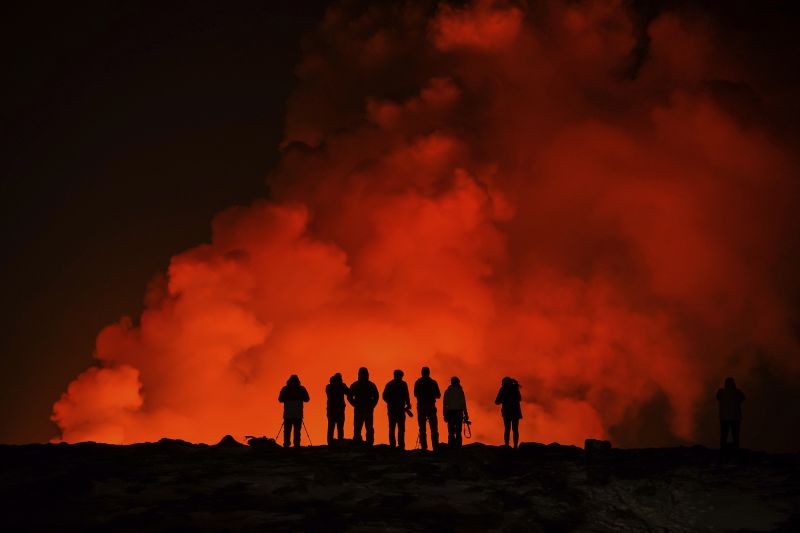
Volcanic Spectacle in Iceland: Nature's Fiery Display

Witness the awe-inspiring eruption of a volcano in Iceland, showcasing a stunning display of molten lava and geological forces. Explore the impact of the eruption on the surrounding areas and the measures taken to ensure safety amidst the fiery spectacle.
The Fiery Awakening
In a dramatic display of nature's raw power, a volcano in Iceland roared to life once again, marking its second eruption this year. The fiery spectacle sent streams of molten lava shooting up to impressive heights of 80 meters, painting the night sky with vivid hues of orange and red.
A group of people watch the eruption.
The eruption, the sixth in the southwestern Reykjanes peninsula since 2021, captivated onlookers with its mesmerizing display of fountains of bright-orange molten rock gushing from the earth's fissures. The live footage captured the intense energy unleashed by the volcano, a stark contrast against the dark backdrop of the night.
Impact and Response
The eruption set off intense earthquake activity, signaling the awakening of the volcano around the early hours of the morning. Spanning over a 3-kilometer stretch, the eruptive fissure mirrored a previous eruption in December, raising concerns for nearby establishments like the Blue Lagoon geothermal spa, which prudently closed its doors to ensure safety.
While the previous eruption in January posed threats to the Grindavik fishing town, the latest eruption appeared to be at a safer distance. However, Icelandic geophysicists cautioned about potential risks to infrastructure like roads and power plants, depending on the flow of lava from the ground.
Volcanic Dynamics and Future Preparedness
Reykjanes' fissure eruptions, known as Icelandic-type eruptions, exhibit a unique geological phenomenon without explosive outbursts. The volcanic activity, though mesmerizing, does not typically produce large explosions or significant ash dispersal.
As Iceland grapples with the dynamic landscape of volcanic activity, authorities have taken proactive measures like building dykes to divert lava flows away from critical infrastructure and residential areas. Despite the downgrading of the volcanic threat level, the constant rise of land due to magma accumulation hints at the potential for further eruptions in the region.









